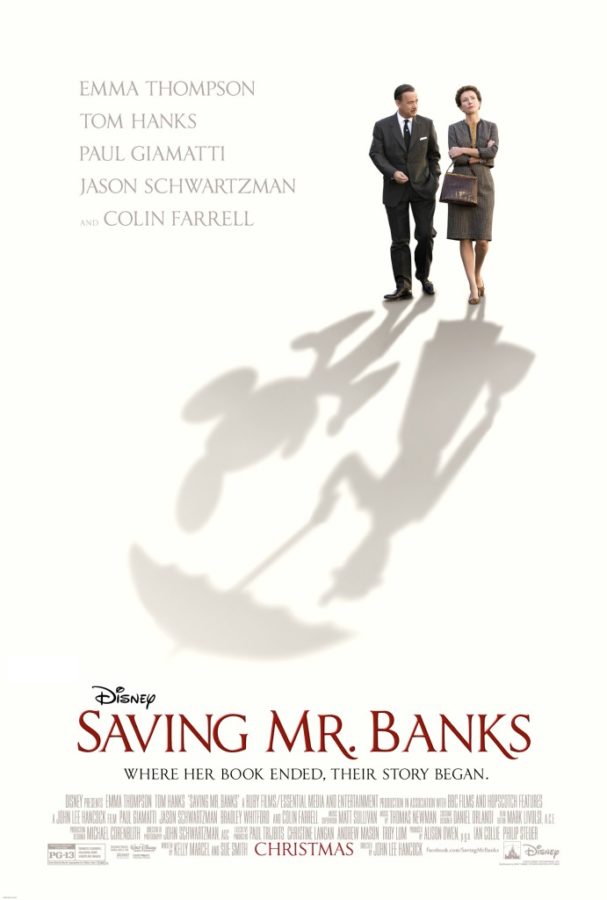Here’s to you, Mr. Banks
January 9, 2014
Many great writers put parts of themselves into their work in order to make their writing as good as it possibly can be. As Saving Mr. Banks wondrously details, P.L. Travers, the woman behind the books that would be adapted into the beloved film Mary Poppins, was a fascinating human being whose work was much more in tune with her own personal life and desires than many would believe.
But I think we’re getting a bit ahead of ourselves aren’t we? Let’s skip back to 1961, when Travers (Emma Thompson) was making the trek to America, specifically Los Angeles, where a famous movie studio was hoping to adapt her books into a film. The studio was run by some dude named Walt Disney (Tom Hanks) and his dream to turn Travers work into cinema clashed with the authors strict guidelines on how her characters would be treated.
Saving Mr. Banks reminded me a bit of last year’s Argo, in the way it shows how powerful movies can be in resonating with people. I wouldn’t say it’s as good as Argo, but frankly, it’s not too far off. Much of that can be attributed to Emma Thompson, who gives Travers a stern demeanor that no one, not even Walt himself, could seem to crack. The film’s best portions are when we get to see where such a demeanor comes from; Travers’ childhood. Now, at first such a period is depicted as idyllic, but it soon morphs into a much more difficult, traumatic experience. This startling transformation owes much of it’s gloriously successful impact to an unexpectedly spectacular performance from Colin Farrell as Travers father. Farrell plays a man who undergoes his own, more somber, character arc in these flashbacks that is grueling to witness.
While she fights for her characters authenticity, Travers meets a variety of characters, including Jason Schwartzman and B.J. Novak as the Sherman Brothers (as a major Disney fan, I must say it’s giddy that this duo is finally being properly represented in film) and Paul Giamatti as a loveable chauffeur named Ralph. Most interesting of all though is Tom Hanks as Walt Disney. Walt is more of a supporting player than the commercials for this flick are indicating, but he makes the most of his screentime to give a lasting impression as the innovative filmmaker. His quiet and calm manner in handling all affairs differs from Travers own personality, and some of the movies best moments come from the two engaging in simple interactions that highlight their juxtaposing ideals.
I’m actually starting to get impressed with director John Lee Hancock, the man who brought a little film called The Blind Side to the big screen in 2009, who seems to have a knack for taking premises that could have been mediocre Hallmark movies and revealing the emotional intensity and triumph behind them. Here, we get to fully experience not just the power of Disney (which gets it’s kudos in the film, don’t you fret) but also the power of the written word, which can reveal more of our inner selves than even the authors themselves might realize. Through her works, Travers surly attitude masked pain and anguish that only Walt and Ralph seemed to realize. Through Saving Mr. Banks, we get to experience the simultaneous burden and joy of being a creator of beloved entertainment.




